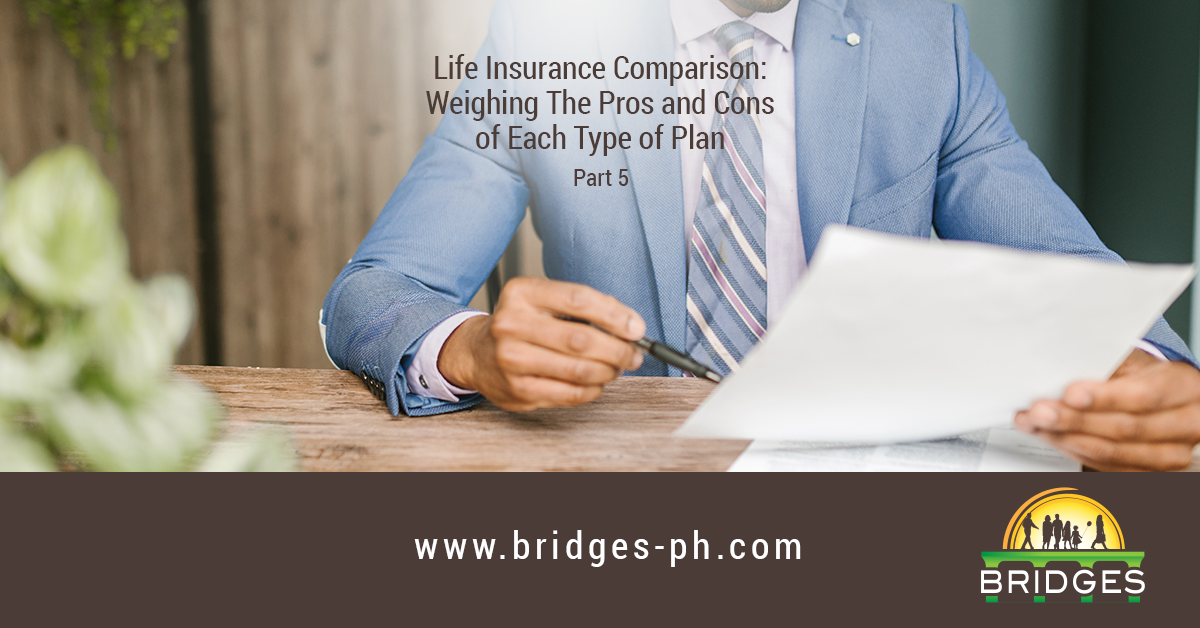
Everyone needs life insurance just as much as they need health insurance. The two insurance plans complement each other in protecting you from many of life’s unforeseen risks. This is why a lot of insurers have bundled them together in a single hybrid product. And this product is what we’re taking a look at for this entry in our ongoing series about the different types of life insurance plans.
Before we start, however, we want to strongly emphasize that as much as possible you should shop for plans that provide more benefits rather than higher limits. Why? Well, think about it this way: the chances of you being able to enjoy your coverage and make claims is higher when you have more benefits.
You essentially want to cover as many bases as you can and make your plan less situational. If you ever, say, contract a critical illness, you can immediately make a claim and not have to wait until you’re on your deathbed to receive financial assistance. Surely, the last thing you want for yourself is to get sick only to find out that your condition is not covered by your plan. Having a lot of benefits helps you avoid that and gives you a broader range of protection.
Perhaps for you to better understand what we’re talking about, you should also know what benefits to consider when you’re shopping. And because these products combine health and life insurance together, there are a lot of benefits to go through. Here are the most important ones:
Coverage of until 100 years old
First off, you’ll want to maximize how long your coverage will last, so you and your assets can stay protected long after you’ve retired. The easiest way to do that is to simply get a plan with a maturity of until age 100. Not only that, you’ll want to make sure that coverage for the most important benefits like critical illness, for example, are also permanent.
Coverage for a lot of critical illnesses
There are a lot of conditions that are classified as critical illnesses, but not all of them are covered by insurers. You’ll want to find a plan that covers as many of them as possible, including cancer conditions. You don’t know what illness you might contract in the future, so it’s better to have a broader range of protection to be on the safe side, as we previously said.
Hospital income benefit
When you’re confined to the hospital, you can’t work. And no work usually means no pay. Hospital confinement benefits help solve this problem by providing you some form of income while you’re out of action or recovering from illness.
There are other benefits that work similarly, such as the home recovery and palliative care benefit, which allow you to make a claim for use in future check-ups, treatment, or other forms of care.
100% of original face amount on death benefit
The main reason you likely want to buy life insurance is to protect your family’s financial stability in case of your untimely death. This benefit does just that, ensuring that your beneficiaries receive the full amount listed on your contract upon your passing.
Living benefits
Another thing you’ll want to have is living benefits, which allow you to earn dividends and build up cash value. These are investment components in your plan that you can use and enjoy while you’re still alive. Whatever money you earn here can be withdrawn for your personal use, taken against a loan, or pay off your remaining premiums.
Guaranteed endowment benefit
You’ll also want a guaranteed endowment benefit that lets you claim a specific amount when your plan matures. This payout can be used to fund your retirement savings, pay for your child’s tuition fees, or cover other expenses that you need to settle.
Fixed premium with a limited paying period
Last but definitely not the least, you’ll want leveled premiums with a limited paying period. This means from the time you affix your signature on the dotted line, you’ll know exactly how long you’ll be paying and for how much. Paying period options are usually 10 years, 15 years, or 20 years. While this doesn’t necessarily make plans any cheaper, having options can at least help you work your finances around your payments.
These are just some of the benefits we think are worth having, but, of course, you’ll still have to consider your own needs. Know what benefits are important to you and get adequate coverage in those areas.
You should also do your own research on what products are available and what benefits they come with. Create a budget of how much you’re willing to spend before you shop around to compare prices.
In case you want to make your search a little easier, we suggest the SUN Fit and Well plan, a hybrid product that offers life and critical illness insurance with anticipated endowment benefits. For inquiries, don’t hesitate to call our office and book an appointment.
linkiNG you to opportunities,

READ MORE:
- Life Insurance Comparison: Weighing The Pros and Cons of Each Type of Plan – Part 1
- Life Insurance Comparison: Weighing The Pros and Cons of Each Type of Plan – Part 2
- Life Insurance Comparison: Weighing The Pros and Cons of Each Type of Plan – Part 3
- Life Insurance Comparison: Weighing The Pros and Cons of Each Type of Plan – Part 4
- Health Insurance Options: Finding The Perfect Plan For Your Needs – Part 1
- Growing Together: Monetary Incentives To Engage Your Team
- How To Effectively Manage Your Finances During Marriage - Part 1
- Staying Ahead of Life and Death Stakes During the Pandemic – Part 1
- Life Insurance: Preparing for the Inevitable
- How You Can Secure Your Family’s Future From Life’s Uncertainties
- Preparing For Marriage: Priorities, Discipline, and Expectations


